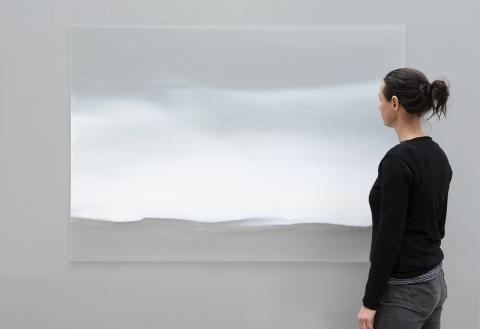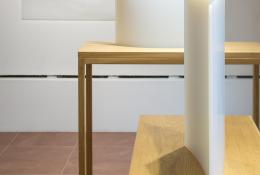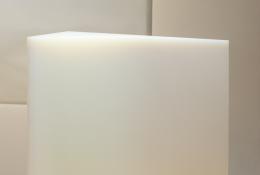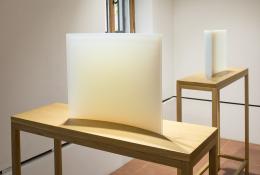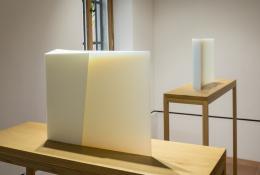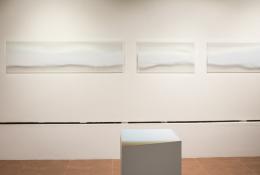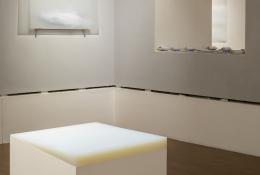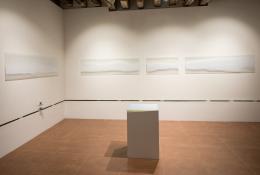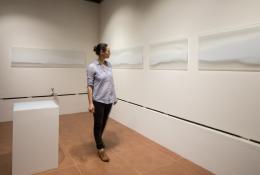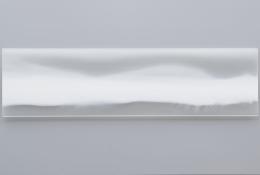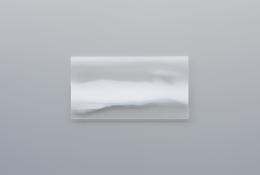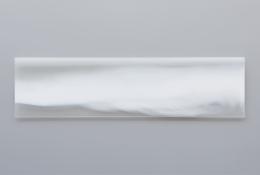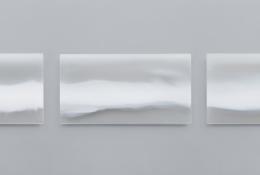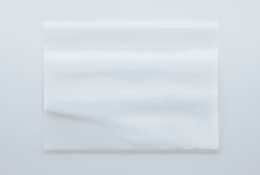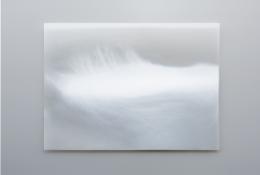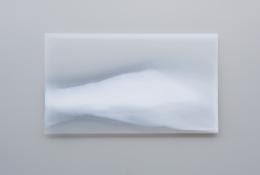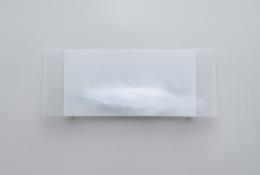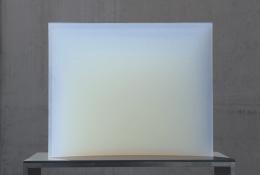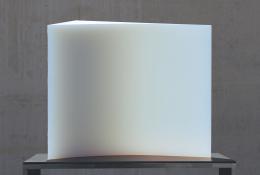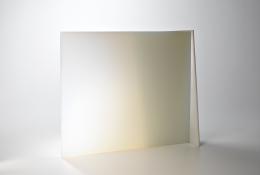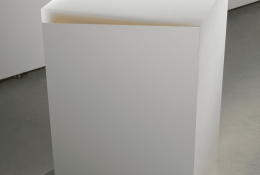AFAR
Afar brings to Italy a body of works by Jessica Loughlin born out of her fascination with light and space experienced in the Australian landscape. By using glass in a Post-minimalistic way, she wants to convey a sense of both emptiness and abstraction, triggering a mental stillness in the viewer. Her subtle and quiet glass-works can be considered as abstract mindscapes, and express a beauty of emptyness lived in the reduced landscapes of the interior, where light and space are fused together.
Loughlin’s artworks are influenced by her experience of long travels in the desert areas of South Australia, where one of the largest salt lakes in the world resides, Kati Thanda - Lake Eyre. This lake rarely is fulfilled with water. Flying over it, different passages of shades become visible. These, starting from the salty white, tend to fuse with the bright-light azure of the sky, giving birth to huge views where the light turns into landscape and one becomes totally immersed both on a physical and emotional level. In describing this landscape, she said: “The boundary between air, water, and ground blurred. Light became the landscape, and I looked down into the sky. It was as if I was suspended in space.”
Afar is divided into two main sections corresponding to the rooms of the Gallery: the former, with a series of sculptural works called “receptor of light”, that can be considered as an antecedent of the “landscapes of light”, which are in the second one.
Despite their reductive palette and minimal nature, Loughlin’s work contains and conceals a spectrum of colours and details. Her “receptors of light”, made of an opaline glass, appear milky white until they reflect the light and become blue or transmit it to reveal warm orange and pinky tones. The latter, then, becomes the contemplative room. It encloses the famous “landscapes of light”, a series of long and narrow wall pieces that run through all the walls. They are bidimensional pictures that recall the ephemeral event of the water in the desert. ‘My material is both glass and light,’ Loughlin says. ‘I use the glass to sculpt light and shadow’. Only thanks to a meticolous and slow gaze from the audience, all the changes of the colours can be catched. The title itself of this exhibition – afar – (in Italian “da lontano”), tempts to highlight the importance of an extended observation. These are works that require a specific time to be admired and to induce the audience with a contemplative state, which is necessary in order to catch the transparencies, the light, and many undertones of the pieces.
As Saskia Baudel, Australian author and biologyst, explains in the essay of the exhibition: “Loughlin has invented a unique technical process that both suggests and embodies the passage of water, flooding and leaving its imprint on the earth’s surface, evaporating, condensing again as
cloud. She grinds solid glass into fine powder, which she moves across sheet glass with water, leaving imprints of the water’s movement across the surface. The water is left to evaporate, creating further watermarks in the glass. The glass is then fused in a kiln. This process is repeated to build up layers of these water imprints, residues and textures. The glass, like the desert, now holds the memory of water as it shape-shifts through phases of the hydrological cycle.” The works, either wall-pieces or threedimensional sculptures are hand-made by the artist in her studio in Adelaide, with the use of flat kilns for the glass fusion.
Born in Melbourne in 1975, the artist took her formation at the Canberra School of Art, where it was fundamental her training under Stephan Proctor. She started her career with the movement “Australian Studio Glass”, born in Australia in the 1980’s thanks to the presence of Klaus Moje. She also trained as a child in Sumi-e and Suibokuga. This early training has influenced her work in both the way she approaches colour, and the balance she finds between the material and process. At the beginning of her artistic practice she worked with calligraphy on glass, a fundamental step in order to understand the importance of a strong gestural and ritual aspect existing in the process of creating her pieces. This feature is still present in her “landscapes of light”, where the performativity of her body and her manual skills can be seen thanks to the sovrappositions of the diverse layers of glass-dust and strong water spatulates.
The event was born from a collaboration between Caterina Tognon and Sandy Benjamin OAM, Melbourne, and it is part of the programme of the Venice Glass Week.
![]()
